Original text by Marina Belova
A connecting stitch serves to join different objects or segments of one object in machine embroidery.
There are 3 types of connectors:
- Walking stitch – joins the objects (segments) with a running stitch.
- Jump – no visible connection between the objects.
- Run – a thread runs between the end of one object and the beginning of another.
I'll tell you a bit about each of these types of connector stitches.
Walking (travel) stitch
A walking stitch can be inserted between separate objects of one color as well as inside the object of a simple or a complex branched shape.
In the picture below you can a walking stitch between the end of one object and the beginning of another – a classic travel stitch between the outlines. The objects are located at some distance.
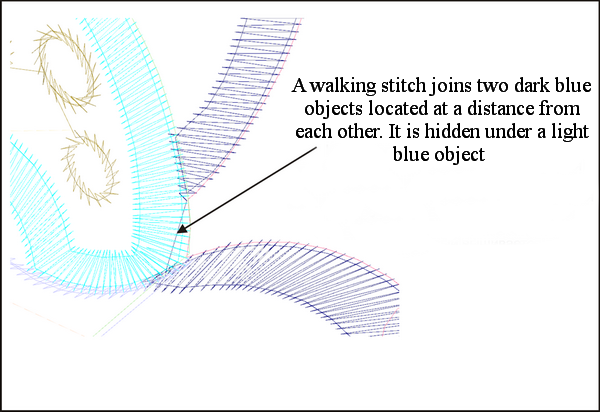
Travel stitches are commonly used when it is possible to hide them under other objects that will be embroidered later.
Walking stitches between the objects of one color aim at minimizing the number of trims in the design and reduce the time spent on the embroidery.
Notice that this trick won't work if the travel stitch is of a dark color whereas the upper layer of stitches is light-colored because the dark thread will shine through the light-colored fill and you'll be forced to trim. If the distance between the objects is up to 1.5–2 mm, you can spare the trim and use a walking stitch instead.
Walking stitches between the segments on one object are shown below.
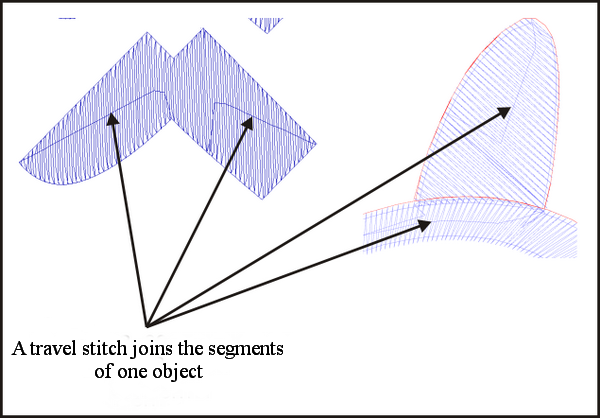
In our days, when the digitizer's work is largely done by embroidery editors a digitizer only enters the parameters of the walking stitches, such as stitch length, the location of the stitch inside the object or at its edge, the amount of overlap between the segments, and the software defines their path.
Walking stitches originated in manual punching times when there was no embroidery software. In those days one complex shape was divided into several simple ones depending on the stitch angle. And the simple shape was split into segments in accordance with the start and finish points in it. The puncher connected all the segments with the running stitches. This laid the foundations for today's walking stitches inside the outline.
The advantages of walking stitches before jumps and trims
- the machine works at a higher speed
- less thread breakage and thread slipping out of the eye
- lesser time and higher productivity
Jumps
Jumps are used to connect objects that are located at a distance so that the walking stitch cannot be applied. You get jumps when the machine moves the hoop but does not stitch. Usually, an automatic trim is inserted before the jump if the machine has a trimmer. There are no threads between the objects when using this connector – they are cut.
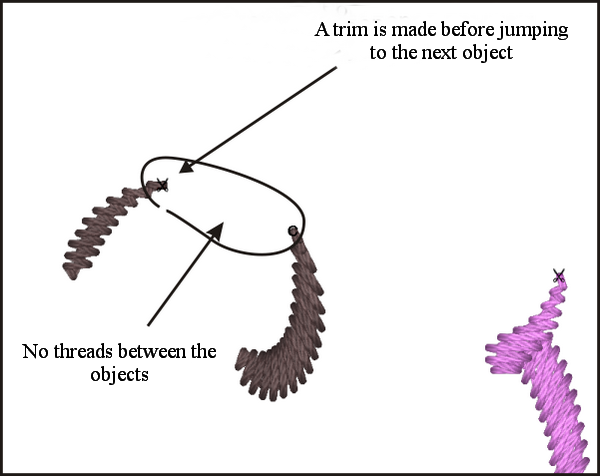
As I stated in my article about embroidery navigation, it's better to minimize the number of trims in the design in order to avoid thread and needle breakage and thread slipping out of the needle. The economic factor should also be considered: every trim adds 7 seconds to the embroidery time and equals to approximately 65 stitches. That is, every trim slows the production.
Runs
Runs are almost the same thing as jumps. Just as jumps, they are used to connect the objects at a distance from each other. Only in this case, there is a thread between the exit point of one object and the enter point of another, though the machine doesn't stitch. You get this when the trim command has not been inserted. This is how it looks:
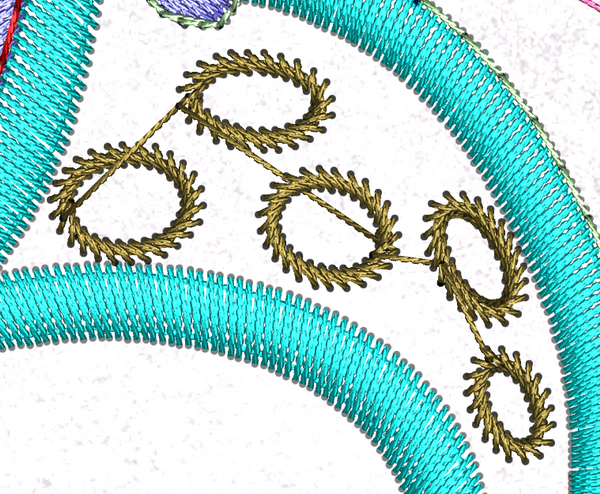
This way of connecting objects in a design is quick and convenient for a digitizer, for you don't even have to think whether a trim is needed.
But, in my opinion, it adds the problem of cleaning after the embroidery is completed. Besides, some of the runs get under the objects that are embroidered later. And it is quite a task to clean the embroidery afterward, which is not at all economically efficient if you have line production.


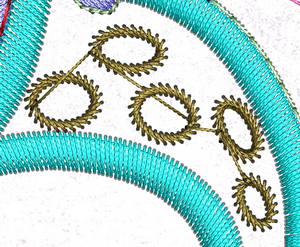

There are no reviews to display.